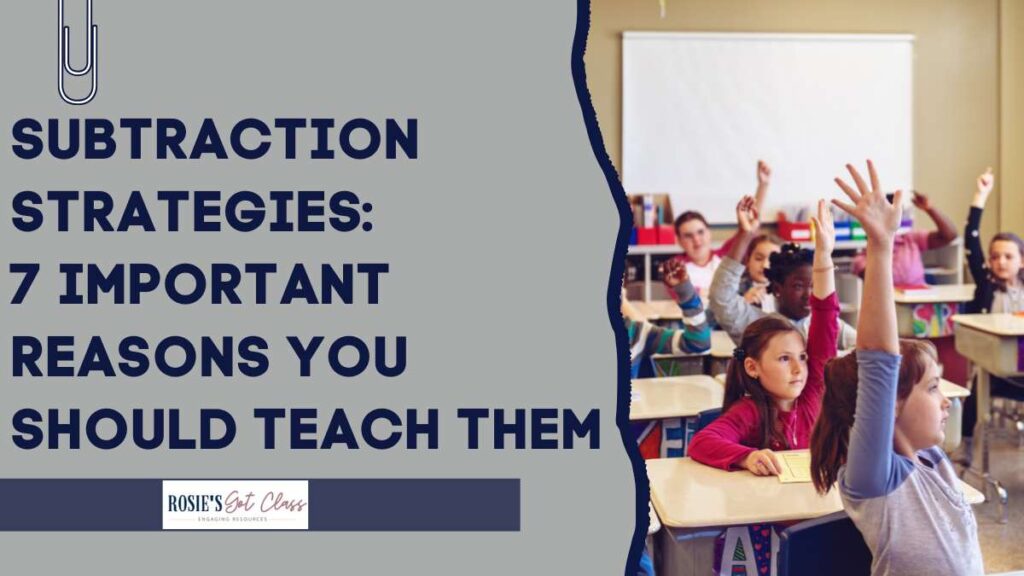
Subtraction is a critical part of math, but teaching it effectively involves more than solving equations. Introducing subtraction strategies equips children with essential skills, builds number sense, develops flexibility with numbers, and strengthens fluency in math facts. These foundational abilities pave the way for long-term success in math and beyond.
A fun and effective way to reinforce subtraction strategies is through interactive games. For example, the Dot Addition and Subtraction game integrates learning and play. By practicing subtraction through games, students deepen their number sense while staying engaged. The best part? You can get this activity delivered straight to your inbox by just adding your name and email in the boxes. It’s a win-win for your classroom!
But why are subtraction strategies so important to teach to your students? Can’t students just use flashcards to memorize facts? Strategies offer a more meaningful and enjoyable approach that can then be used with flashcards, games, and meaningful activities. Here are seven key reasons why teaching subtraction strategies is worth your instructional time.
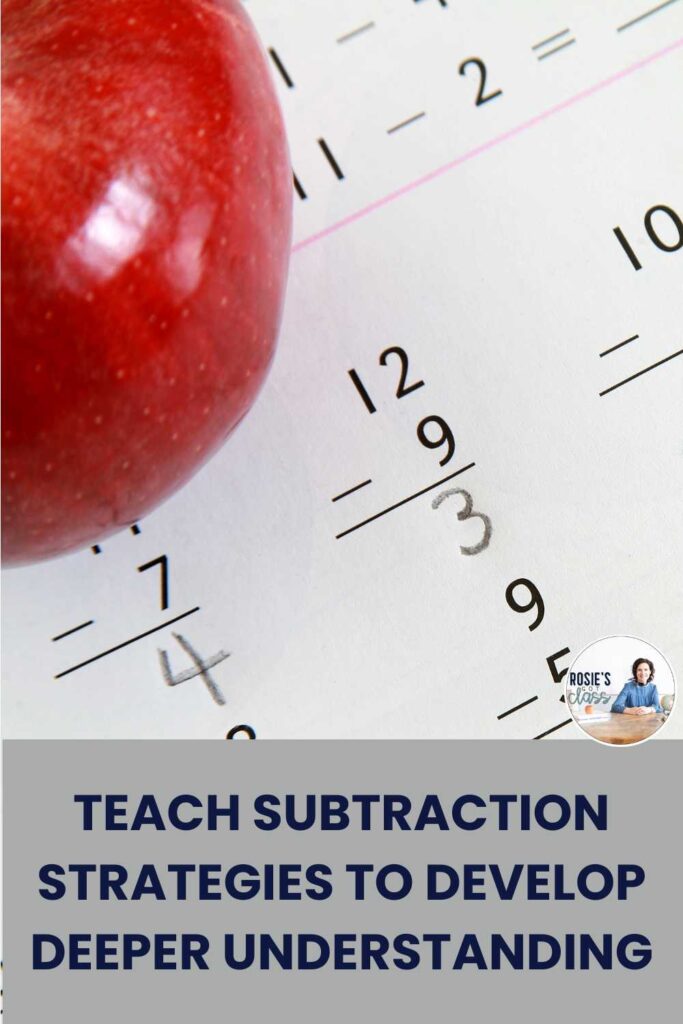
Builds a Deeper Understanding of Numbers
Memorizing subtraction facts can improve speed, but it doesn’t foster a deep understanding of math. Subtraction strategies teach students to think critically about numbers. For example, breaking down 15 – 7 into smaller, manageable parts shows how subtraction works. Ask your students if they can think of an easier number that is close to 7 to subtract from 15. Hopefully they will say 5. If they can’t come up with five, you can make a list of all of the combinations that add up to 7. After they have subtracted 5 from 15, they will have ten. Ask them how many more they need to subtract if they are trying to subtract 7. Have them count backwards by 2 or help them make further connections by talking about counting backwards by an even number. They will arrive at 8 because 15-7=8.
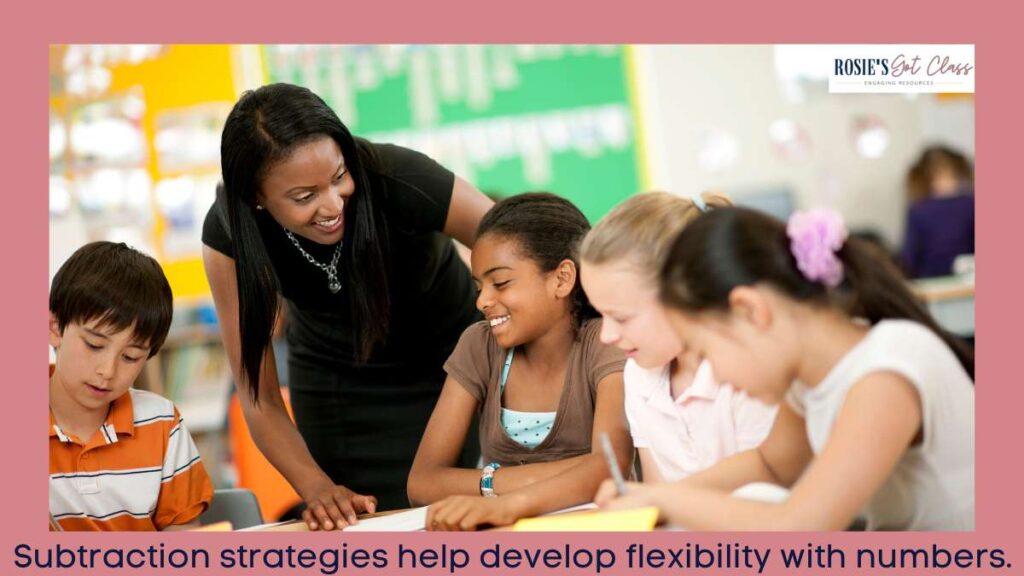
Encourages Flexibility in Thinking
Subtraction strategies help students approach numbers in creative ways. For instance, solving 9 – 4 by counting up from 4 to 9 teaches them to see subtraction as the difference between two numbers. This flexibility enhances problem-solving skills and encourages a deeper connection with numbers.
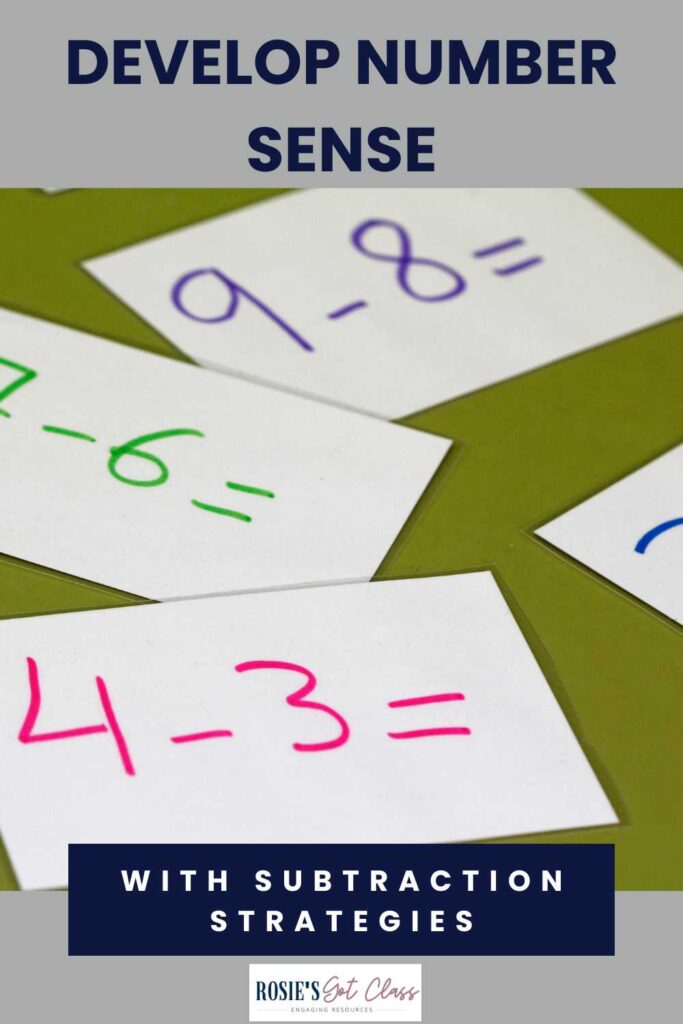
Strengthens Number Sense
Number sense is the ability to recognize relationships between numbers. Strategies such as using fact families help build number sense. Knowing 8 + 7 = 15 helps solve 15 – 8 = 7 because it shows patterns and connections. This understanding boosts confidence and competency in math.
Supports Fact Fluency
Fluency in math facts means solving problems accurately and quickly. Subtraction strategies provide helpful tools for students who may not instantly recall an answer. For example, using the doubles strategy can help students determine that 16 – 8 = 8 because they know 8 + 8 = 16.
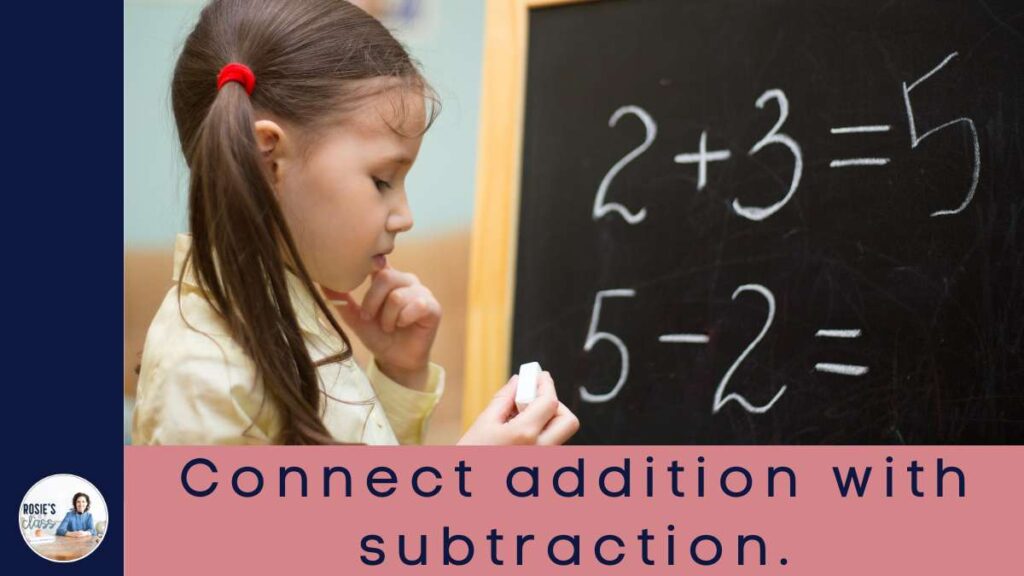
Highlights the Link Between Addition and Subtraction
Teaching subtraction strategies helps students understand how addition and subtraction are connected. Recognizing fact families such as 5 + 8 = 13 and 13 – 8 = 5 allows students to apply their addition knowledge to solve subtraction problems more efficiently.

Prepares Students for Advanced Math and Real-Life Situations
Subtraction skills are critical for tackling more complex math concepts, such as two and three digit subtraction, fractions, and even algebra. Beyond the classroom, subtraction is used in everyday situations like calculating change or comparing quantities. Teaching strategies ensure students are equipped for these scenarios.
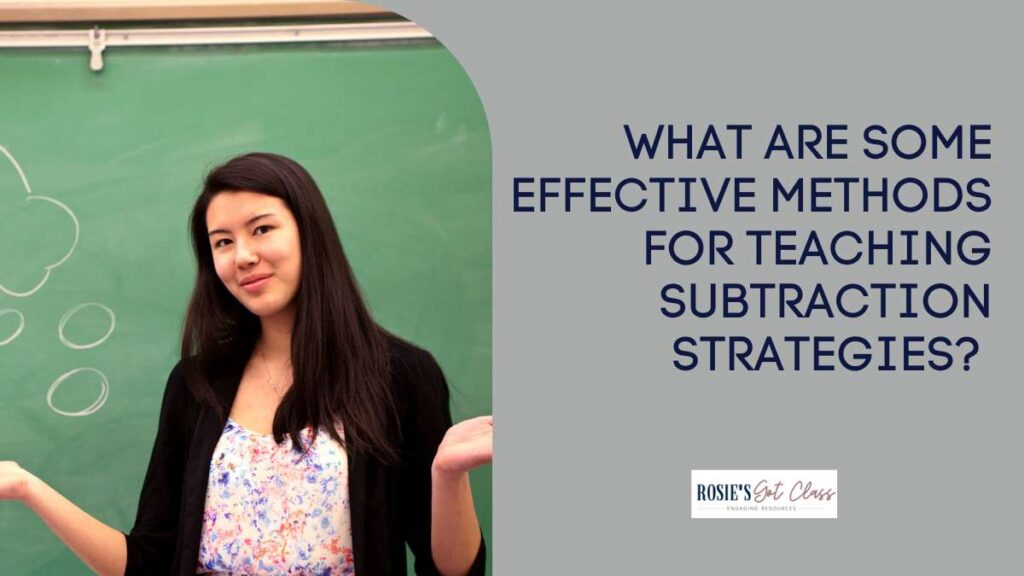
Engages Students with Effective Teaching Methods
Using interactive and visually stimulating tools can make subtraction enjoyable and memorable. Here are a few methods to try.
- Manipulatives: Counters, number lines, and base-ten blocks provide hands-on learning experiences.
- Games: Activities like Spin and Play or Color by Code make practice engaging.
- Models: Ten frames, number bonds, and bar models illustrate subtraction concepts.
- Mental Math: Strategies like counting back or counting up can be practiced during your math centers. You can use activities like Roll and Write or Flip the Card to practice the strategies. Another fun activity you can use is Spinning Wheels for PowerPoint Games.
- Discussion: Encouraging students to explain their thinking deepens understanding and promotes confidence. When students can explain their thinking, I know they understand the concept of subtraction.
In conclusion, teaching subtraction strategies does more than improve students’ math skills because it builds their confidence, encourages flexible thinking, and lays the groundwork for future success. By incorporating engaging activities and strategies, you’re helping your students become proficient mathematicians.
Make subtraction a fun and rewarding part of your classroom today!
Here is another article you might find helpful.
Rethinking the Way We Teach Subtraction


